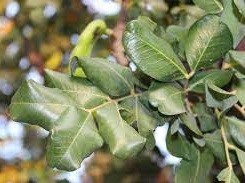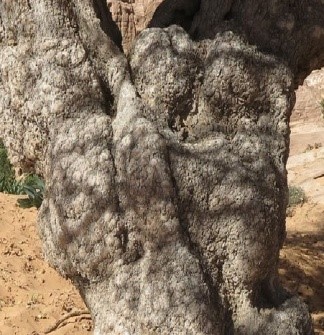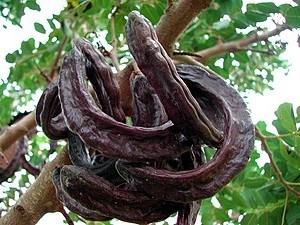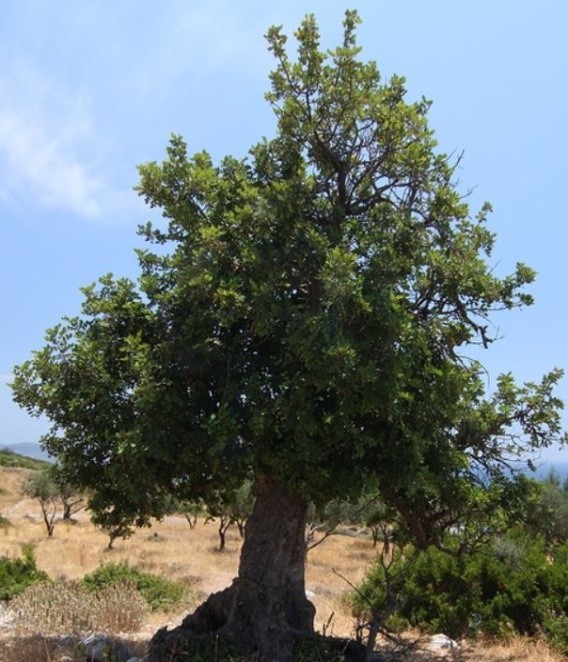Trees
Ceratonia siliqua Linn.
Ceratonia siliqua Linn.
Description :
A
small evergreen tree. The leaves are compound with leaflets paired in groups of
3 to 5. The leaflets are arranged opposite each other on the main axis of the
leaf. Leaflets are 3 to 5 cm long. The flowers occur in small bunches 5 to 7 cm
long. Each flower is very small and greenish in color, appearing between
October and November. The pods are large 7 to 30 cm long and 1 to 2 cm wide.
The pods are thick and turgid. Seeds are embedded in the pulp within the pods.
Pods mature in December. It can be reproduced both from seed and by vegetative
means. The seed will remain viable for at least 5 years if stored in cool, dry
conditions. Seed could be obtained from Pakistan Forest Institute, Peshawar
where it has been planted in small blocks. A rather slow growing but excellent
fodder tree. Pores are moderately sized in radial patches. Rays are unequal and
irregularly distributed. The sapwood is white, and the heartwood is red having
density hard, heavy with a calorific value of 4900 kcal/kg.
Distribution :
has
been successfully established in the subcontinent. In Pakistan it has been
planted in the Punjab and is found as far north as Abbottabad and Peshawar in
KP. It has a wide range of adaptability and will do well on a variety of
soils within a dry, sub-tropical, temperate climate. It is damaged by hard
frost, so it does best in a temperature range between 0 and 40°C. The tree does
not do well where precipitation is below 300 mm. This tree is highly
intolerant.
Uses :
Because
of its fodder production the tree has potential on poor sites. It must be
protected from uncontrolled grazing and can be considered a good farm forestry
tree, but its slow growth may restrict expansion in its use. Also used as fodder
(both leaves and pods), fuel, gum, and medicinal.



